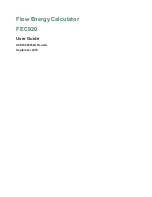
Mortgages and Amortization 17
BEAR-CH1.DOC BA Real Estate Guidebook Jackie Quiram Revised: 09/28/99 1:16 PM Printed: 09/28/99 1:16 PM
Page 17 of 36
The
#
,
key sequence lets you alternate between
beginning-of-period and end-of-period payments. For
example, a savings or lease situation may require
payments at the beginning of each payment period, while
most loans have payments at the end of each period. These
settings affect how interest is calculated.
When the calculator is set to beginning-of-period, the BGN
indicator is displayed. The factory setting is end-of-period
payments (no indicator).
The
#
+
key sequence lets you enter the number of
payments (P/Y) per year and the number of compounding
periods (C/Y) per year.
The factory default setting is 12 for both P/Y and C/Y; that
is, 12 payment and compounding periods per year. Some
TVM calculations may require that you change these
settings. For example, a savings program may have
regular monthly deposits (P/Y = 12), but daily
compounding (C/Y = 365).
When you press
#
+
, the display shows
P/Y = nn
,
where
nn
is the current setting. You can press
j
to
accept the P/Y value, or enter or calculate a new value
(from 1 through 999) and press
j
.
The calculator temporarily displays the new P/Y setting,
copies the P/Y value into C/Y, and advances the display to
show
C/Y = nn
. You can then press
j
to accept the C/Y
value, or enter or calculate a new value (from 1 through
999) and press
j
. This sets C/Y, temporarily shows the
new C/Y value, and then exits.
Note:
You can exit either prompt by pressing
!
. If you
want to exit after starting to enter a new value for P/Y or
C/Y, press
!
twice.
Changing TVM Settings
You can vary settings that affect TVM and Amortization
calculations. These settings allow you to customize the
calculation for the specific loan or savings situation you
are evaluating. The calculator retains the settings until
you change them (or until batteries are replaced).
Selecting
Beginning- or
End-of-period
Payments
Setting P/Y and
C/Y
















































